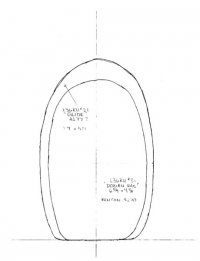Needs some help
HI Mark/Vonnie,
Absolutely you are preventing the rig from bending down low. The af lower MUST be eased until you are getting a uniform bend from the deck to the top (without runners being installed). If the runner tails are tight on the lower chainplates, take them off during tuning! and make sure they are not tensioned if you are going to store them there.
BUT- before you do this, make sure you have the mast step and collar positioned per the tuning guide (meaning mast in the aft-most position on the step, and the mast blocked all the way forward in the deck cut out). The ease the aft lowers and dock tune it. You are still not done, though-you need to tune the rig under sail-you cannot really see how it looks under load by dock tuning. Dock tuning should just get you in the ballpark. You need at least 8-10 knots of wind for good tuning conditions....There are a lot of posts here about tuning under sail-check those out and let me know if you have any questions.
My guess is the bend will be close to double what you see once this is all done.
Cheers!
HI Mark/Vonnie,
Absolutely you are preventing the rig from bending down low. The af lower MUST be eased until you are getting a uniform bend from the deck to the top (without runners being installed). If the runner tails are tight on the lower chainplates, take them off during tuning! and make sure they are not tensioned if you are going to store them there.
BUT- before you do this, make sure you have the mast step and collar positioned per the tuning guide (meaning mast in the aft-most position on the step, and the mast blocked all the way forward in the deck cut out). The ease the aft lowers and dock tune it. You are still not done, though-you need to tune the rig under sail-you cannot really see how it looks under load by dock tuning. Dock tuning should just get you in the ballpark. You need at least 8-10 knots of wind for good tuning conditions....There are a lot of posts here about tuning under sail-check those out and let me know if you have any questions.
My guess is the bend will be close to double what you see once this is all done.
Cheers!

